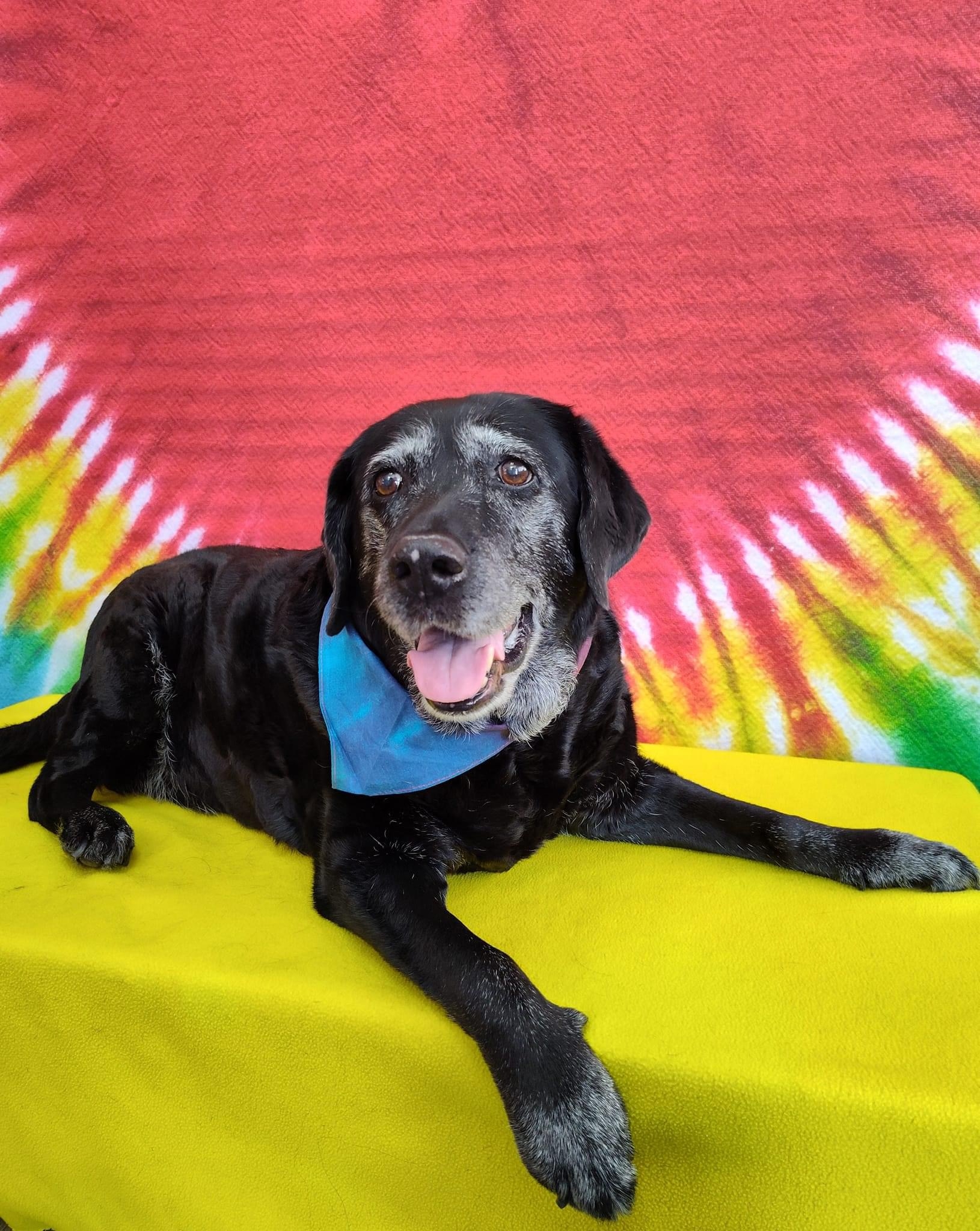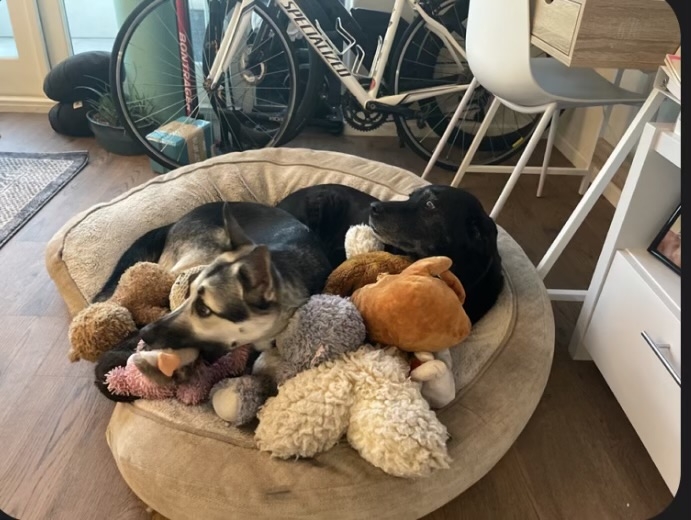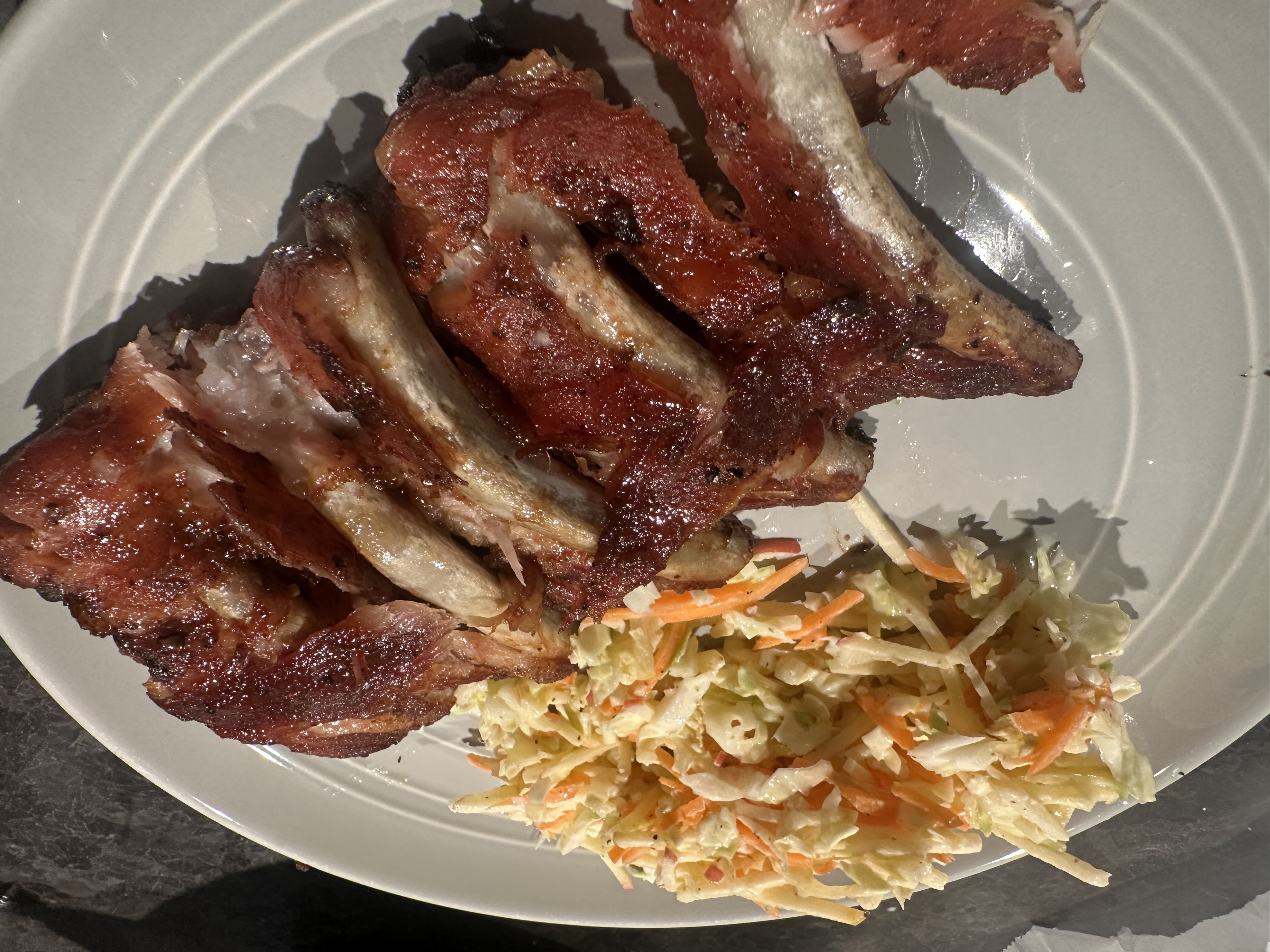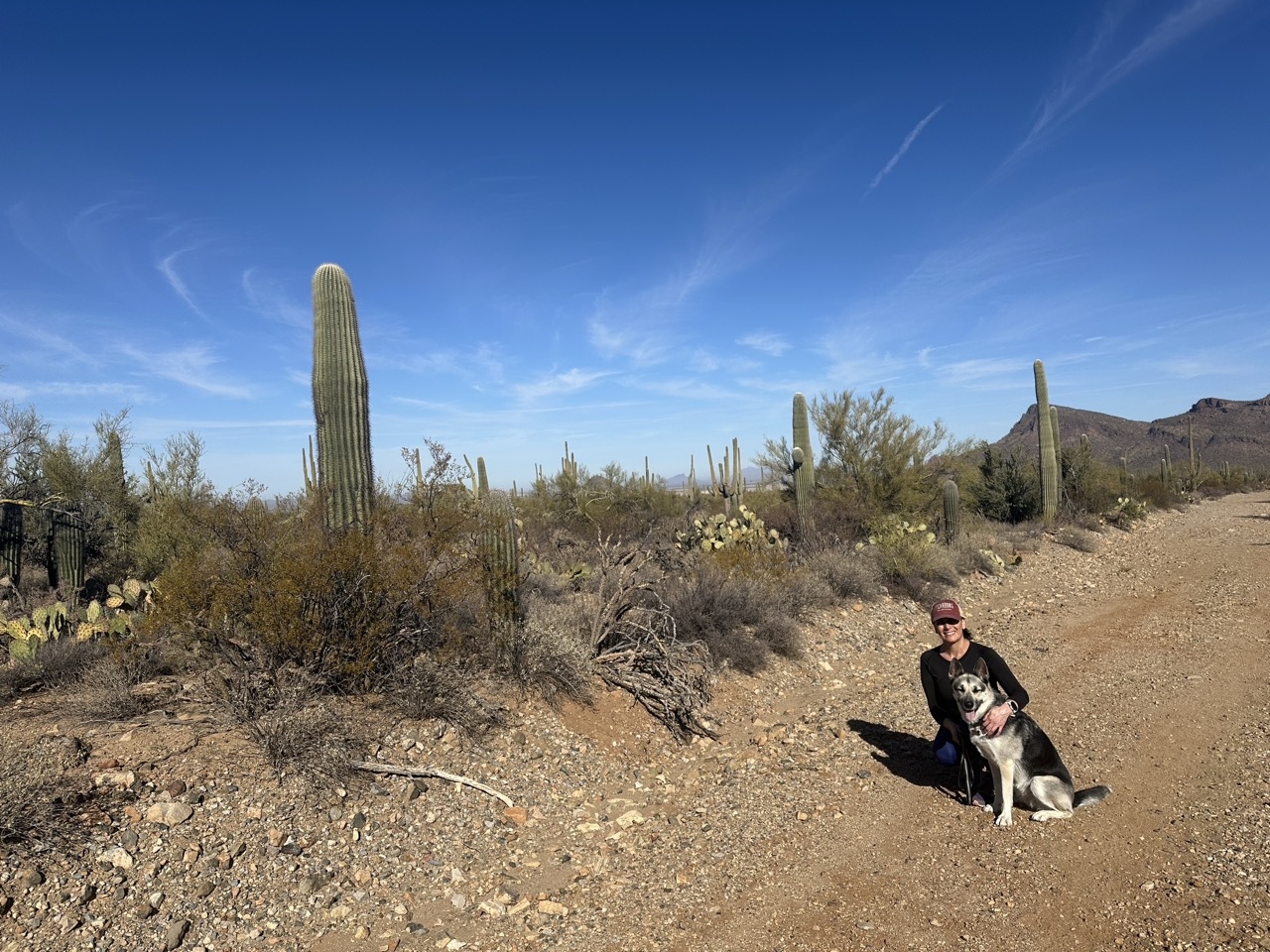 Jody graduated Magna Cum Laude from Wellesley College with a BA and honors in neuroscience before earning her MD from the University of Arizona College of Medicine-Tucson. She concurrently earned a Masters of Medical Sciences in Medical Education from Harvard Medical School. Jody’s professional interests include consult liaison psychiatry, sports psychiatry, research, and medical education. In her free time, Jody enjoys writing, knitting, hiking, and time with family and friends.
Jody graduated Magna Cum Laude from Wellesley College with a BA and honors in neuroscience before earning her MD from the University of Arizona College of Medicine-Tucson. She concurrently earned a Masters of Medical Sciences in Medical Education from Harvard Medical School. Jody’s professional interests include consult liaison psychiatry, sports psychiatry, research, and medical education. In her free time, Jody enjoys writing, knitting, hiking, and time with family and friends.
Hello! As a PGY3 here at the University of Arizona Psychiatry Program we primarily work in the Outpatient Psychiatry Clinic. Clinic hours are 8-5pm Monday through Friday, but as I hope the following snapshot will illustrate, our days, weeks, and responsibilities vary greatly. Let's dive in!
Monday
- Morning: After my usual morning routine of coffee and packing up lunch for the day, I wake up my 13-year-old labrador, Margie and we head out. Two days a week she goes to doggy day care. It is admittedly one of my most indulgent expenses, but she’s been going there 2-3 days a week since she was 4 years old and while she no longer needs to burn off excess energy, I truly believe she loves it and that her time there keeps her young at heart!
 With Margie settled in, I head to Banner South Campus to start my day. From door to door, including the daycare drop-off, I’m in my office less than 30 minutes after I leave home. Yep, you read that right. As a PGY3 we have our own offices!
With Margie settled in, I head to Banner South Campus to start my day. From door to door, including the daycare drop-off, I’m in my office less than 30 minutes after I leave home. Yep, you read that right. As a PGY3 we have our own offices!
Usually, I have E&M (evaluation and management) supervision from 8-9am on Mondays but that supervisor is away this week, and my 9am weekly therapy patient canceled, so I don’t have patients to see until 10am today. I spent the morning catching up on some administrative tasks, responding to voicemails that were left over the weekend, doing some reading my supervisor had recommended I review while he was away, and preparing for the morning’s patients.
From 10am-12pm I have four back-to-back 30-minute medication management appointments. Three patients were seen by video conference/telehealth, and one was in person. We are responsible for scheduling our own follow-ups and because I have the most flexibility in my schedule on Monday and Friday mornings, that is when I see most of my follow-ups.
Before I know it, it's noon. Most Mondays I would have lunch on the patio attached to our staff break room where many of my co-residents would also be eating and hanging out for the lunch hour. Today though, I booked a meeting with the supervisor who is mentoring me for a presentation I am giving in two days. More on that later!
- Afternoon: Most Mondays at 1pm I would have an intake appointment. As PGY3s, we have two intakes weekly. For each intake, 90 minutes is blocked on our schedule at the same time every week. We see the patient with our supervisor, staff the case, and wrap up the treatment planning within that time. After that, the patient will not directly see the supervisor again. We are the primary psychiatrist and point of contact and staff the follow-ups with our attendings during our weekly supervision. However, the first week of every month is a “No Intake Week.” We have the option of scheduling follow ups during our intake time slots these weeks, using the time to catch up on administrative tasks, or working on individual projects.
Today, I used the time to work on my project for the Psychiatry Trainee Research Program (PTRP). Introduced in our program during my intern year, the PTRP allows for a protected time during PGY2, PGY3, and PGY4 for those of us interested in pursuing more research activities than the base amount of scholarly activity required by the program. My current research is in Sports Psychiatry. I had two weeks of protected time in PGY2 during which I focused on a literature review and networking with the athletics department at the University of Arizona to start collaborating on a project involving student-athletes. As a PGY3, PTRP participants are allocated 10% protected time, which works out to a half day weekly and our patient panels at the beginning of the year were reduced by about 10% from average to accommodate this protected time. The reality is, I tend to put a lot on my plate and do not always take advantage of the protected time for research and/or prioritize it over clinical work, but that is totally a me thing. The time and opportunity are what one makes of it. Currently, I am drafting a project proposal to present to the athletics department before seeking IRB approval. I am on track to complete these steps this year and hope to have the project up and running when I have more protected research time as a PGY4.
- Evening: As usual, once I do get to work on my research, time seems to fly and before I know it it's well past 5pm. Time to wrap up. I head back to daycare to pick up Margie and am home by 6pm. Dinner, knit a few rows while watching TV, and off to bed. Some evenings, some weeks, I am more active outside of work. The upside of what I have on my calendar this week is that it will illustrate much of the breadth of what I am involved in as a PGY3. The downside is, because it’s a busy week the extracurriculars are going to be on the back burner. Some of the most memorable advice I got in medical school was to find a way to make time for the things you love now because you’re only going to get busier. I have held true to that for the most part, while also honoring the reality that for me work and life balancing out is often calculated from weeks to months rather than days to days. I chose everything that’s on my plate this week and while it’ll be a busy one, it will also be energizing, motivating, and fulfilling. So for now, I’ll sleep fast and gear up for tomorrow!
Tuesday
 Morning: Tuesdays start with supervision at 8am for me, just like Mondays, but today with the second of my two E&M supervisors. Most weeks we then roll right into my second intake of the week at 9 am. Today, we spent supervision discussing patients I had seen for follow-up in the week since she and I last met, and at 9 am I squeezed in one med management follow-up who had to cancel the week before. I try to leave intake slots open on “No Intake” weeks for administrative and/or research catch up, but doing so also allows me the flexibility to fit in last-minute appointments as I did today. After that appointment, I returned a few calls and then saw a weekly psychotherapy patient from 11-12pm. I wrapped up my encounter tasks like billing and documentation while eating lunch as I have my longitudinal specialty clinic on Tuesday afternoons, and while I am not expected there until 1pm I try to get there by 12:30, which means leaving my office by about 12:20.
Morning: Tuesdays start with supervision at 8am for me, just like Mondays, but today with the second of my two E&M supervisors. Most weeks we then roll right into my second intake of the week at 9 am. Today, we spent supervision discussing patients I had seen for follow-up in the week since she and I last met, and at 9 am I squeezed in one med management follow-up who had to cancel the week before. I try to leave intake slots open on “No Intake” weeks for administrative and/or research catch up, but doing so also allows me the flexibility to fit in last-minute appointments as I did today. After that appointment, I returned a few calls and then saw a weekly psychotherapy patient from 11-12pm. I wrapped up my encounter tasks like billing and documentation while eating lunch as I have my longitudinal specialty clinic on Tuesday afternoons, and while I am not expected there until 1pm I try to get there by 12:30, which means leaving my office by about 12:20.
- Afternoon: My longitudinal specialty clinic is in the Substance Use Disorder Treatment Program at the VA. Other options for this PGY3 requirement are General Adult Psychiatry Clinic at the VA, Banner Whole Health Clinic, and Banner Child and Adolescent Clinic.
This afternoon I had an intake and 5 follow-ups scheduled. If I need to staff anything I send the attending a message on teams, or she stops in for a chat. She is an amazing addiction psychiatrist and director of the addiction fellowship here so every conversation with her is a crash course in substance use disorder management. Today went pretty smoothly and I wrapped up and headed home around 4:30pm.
- Evening: No good excuses for how this evening went. I had best intentions to continue preparations for the talk I’m giving Wednesday, yet, despite getting home early I actually convinced myself I was prepared enough and went on with my usual evening routine.
The weather this week is perfect. It’s weeks like this that help me forget the heat of Tucson summers so today I spent time soaking it up with the dogs and then made dinner and also did some more meal prep for Wednesday and Thursday dinners since those are my longest days of the week and nothing makes me happier than having an easy meal to heat up after a long day!
Wednesday
- Morning: I stopped at and picked up my favorite lunch on the way to work today, knowing I wouldn't eat until after my talk from 12-1pm and that I’d need something easy to grab and eat during the rest of didactics. A chicken Caesar salad from Salad and Go fits the bill!
Most Wednesdays I have weekly therapy patients from 8-9am and 9-10am then CBT supervision from 10-11am and often a 30-minute follow up at 11am.
Wednesday from 12pm-5pm is protected didactic time through all 4 years of residency. The 12-1pm hour is most often Grand Rounds, with an occasional QIPS in the mix. 1pm is an all-residency meeting or journal club. 2-5pm are class-specific didactics.
In the PGY3 year we are required to complete either a QI project or present a QIPS. I chose the latter and today I am presenting my QIPS from 12-1pm so I lightened my schedule a bit this week to accommodate that and went down to the room I’d be presenting in by 11:30am to troubleshoot the inevitable IT glitches in getting my PowerPoint connected to the projectors and the room connectedto teams for faculty joining remotely. Once we were up and running I paused for a moment to breath a sigh of relief then we were off and running.
- Afternoon: Before I knew it, it was 1pm and my QIPS had gone well. Phew! Now the challenge was to fight the post-anxiety crash and pay attention during the all-residents meeting with PDs and chiefs. That meeting was pretty efficient and wrapped up a little early so finally I had time to run upstairs and get my salad to fuel the rest of the afternoon's didactics.
- Evening: With the QIPS behind me, I fell into the evening with the sweet sense of accomplishment that comes from completing a project that was months in the making.
Thursday
- Morning and afternoon: Supervision again for me on Thursday mornings, this time psychodynamic. In CBT and psychodynamic supervision, we often watch video from the session for real time feedback to improve our therapy skills. I also have the privilege of having co-supervision for psychodynamic with one of my co-residents and it has been a trem
endous learning experience to get to review each other's therapy sessions and learn not only from our own experiences, but also from each other's feedback.
 Right after supervision, I saw my only patient of the day because as PGY3s, most of Thursday (10:30am-12pm and 1-5pm) are also protected for didactics! This is unique in our program to the PGY3 year and allows us to really accelerate our learning of psychotherapeutic modalities and techniques.
Right after supervision, I saw my only patient of the day because as PGY3s, most of Thursday (10:30am-12pm and 1-5pm) are also protected for didactics! This is unique in our program to the PGY3 year and allows us to really accelerate our learning of psychotherapeutic modalities and techniques.
- Evening: Despite meal prepping on Tuesday for Thursday dinner, by the time Thursday evening rolled around it was already feeling more like Friday and my boyfriend was back from work travel earlier in the week and the weather was still perfect so we took his dog to the dog park (Margie outgrew dog parks years ago, but his dog Penny is still a youngster and loves to make the rounds!), then we went to Graze for dinner. Graze is a local burger joint. Fast casual, good food. Perfect way to unwind and reboot.
Friday
- Morning: And we’re off. I had patients booked solid from 8am - 12pm today then two more this afternoon. I was also on outpatient clinic call so I was responsible responding for calls and messages received by the clinic for any docs who might be out of the office today.
- Afternoon: Despite the busy morning and a pile of notes, I finally made it to the patio for lunch with co-residents today and enjoyed a nice break in the day. After lunch, I worked on notes, fielded call coverage, saw my last two patients, and headed home around 5pm.
- Evening: Tonight, we went out to dinner with my boyfriend’s parents to Rocca’s, a local pizza place that recently moved into a new location. The food is just as good as at the original location!
Saturday
 One thing about Tucson in February is that no matter how tired I might be, I truly can find no excuse to not get myself outside to enjoy the weather when I have the chance to. Today we drove out to Saguaro West National Park to go hiking. Penny would never forgive us if we didn’t take her - and honestly, it wouldn't be as fun - but it does limit us to the dog friendly trails in town. Fortunately, it’s hard to go wrong on a nice dirt road with saguaros as far as the eye can see and a chance to see some petroglyphs. We had a lovely hike, followed by a quick sandwich before heading home. Even though we just ate, as soon as we were home my boyfriend started his hours-long process of smoking ribs for dinner. I happily changed into lounge clothes, worked on this journal a little, and read my book.
One thing about Tucson in February is that no matter how tired I might be, I truly can find no excuse to not get myself outside to enjoy the weather when I have the chance to. Today we drove out to Saguaro West National Park to go hiking. Penny would never forgive us if we didn’t take her - and honestly, it wouldn't be as fun - but it does limit us to the dog friendly trails in town. Fortunately, it’s hard to go wrong on a nice dirt road with saguaros as far as the eye can see and a chance to see some petroglyphs. We had a lovely hike, followed by a quick sandwich before heading home. Even though we just ate, as soon as we were home my boyfriend started his hours-long process of smoking ribs for dinner. I happily changed into lounge clothes, worked on this journal a little, and read my book.
Sunday
 Up and at ‘em again this morning but stayed closer to home for some outdoor time/exercise and took Penny for a walk up A-Mountain. A-mountain has a paved road with a 1-mile loop around a local peak that looks over the city and beyond with amazing views, It is popular for 4th of July fireworks or for sunrise/sunset during which the Arizona sky rarely disappoints. The road is closed to vehicles in the morning so it's a great time to walk, run, or bike the hill which all in is a little over 1.5 miles. Short and sweet, but the grade on the climb gets the heart rate going!
Up and at ‘em again this morning but stayed closer to home for some outdoor time/exercise and took Penny for a walk up A-Mountain. A-mountain has a paved road with a 1-mile loop around a local peak that looks over the city and beyond with amazing views, It is popular for 4th of July fireworks or for sunrise/sunset during which the Arizona sky rarely disappoints. The road is closed to vehicles in the morning so it's a great time to walk, run, or bike the hill which all in is a little over 1.5 miles. Short and sweet, but the grade on the climb gets the heart rate going!
Then it was home to quickly get priority chores done for the week - clean the house, laundry, etc before driving down to Rio Rico for a Super Bowl party. We got here a little early and as I wrap up this journal I am sitting outside looking out over the San Cayetano Foothills and the Santa Cruz River Valley, enjoying the quiet of Southern Arizona and reflecting on not only the week that I've documented here but all the twists and turns that brought me to this point and looking forward to the adventures still to come.

